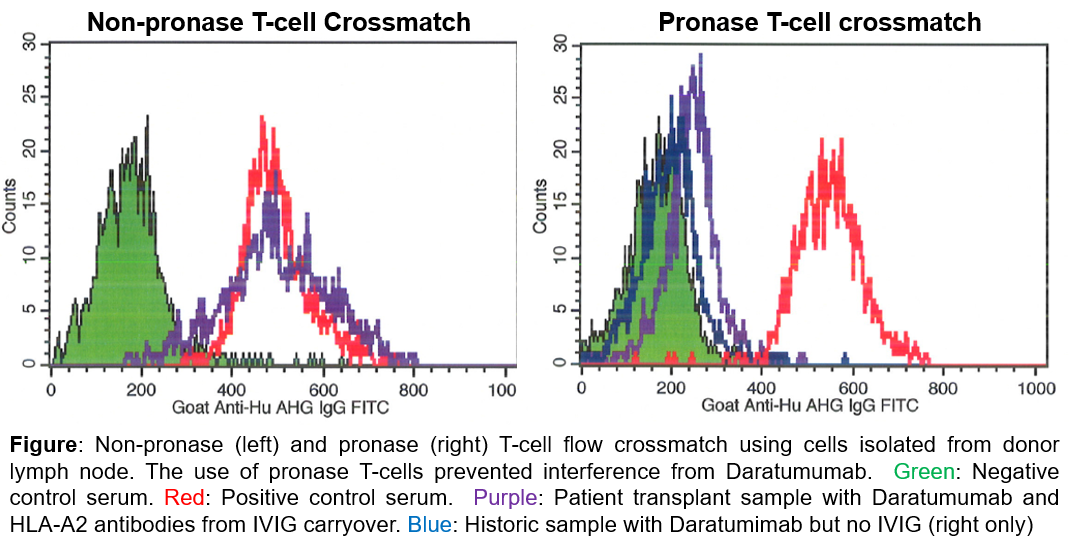Use of Pronase to Identify HLA Crossmatch Antibody Interference
1UT Southwestern, Dallas, TX, 2University of Texas Southwestern Medical Center, Dallas, TX, 3University of Texas Southwestern, Dallas, TX
Meeting: 2022 American Transplant Congress
Abstract number: 1145
Keywords: Antibodies, Graft acceptance, Heart transplant patients, Histocompatibility antigens
Topic: Clinical Science » Heart » 63 - Heart and VADs: All Topics
Session Information
Session Time: 7:00pm-8:00pm
 Presentation Time: 7:00pm-8:00pm
Presentation Time: 7:00pm-8:00pm
Location: Hynes Halls C & D
*Purpose: Solid organ transplant centers should maintain vigilance that antibody therapies can impact HLA crossmatch results.
*Methods: N/A
*Results: A 46-year-old man with Mayo stage IV cardiac AL amyloidosis was receiving second-line chemotherapy with daratumumab, pomalidomide, and dexamethasone with clinical response. Due to end-stage, restrictive cardiomyopathy he underwent a heart transplant evaluation and was an acceptable candidate. While awaiting a heart transplant, he had no sensitizing events; however, he received daratumumab, bortezomib, and also received IVIG for acquired IgG deficiency. An acceptable donor offer was received, and the virtual crossmatch based on the historic sample was negative. However, the physical crossmatch with fresh sample was strongly positive for non-pronase T-cell (22,023 MESF, 2000 MESF cutoff), and weakly positive for pronase B-cell (3,744 MESF). The fresh sample also had several weak HLA-A2 donor specific antibodies attributed to carryover from IVIG. Crossmatch with the historic sample was also T-cell positive (18,706 MESF), but B-cell negative confirming the absence of HLA antibodies. Subsequent pronase treatment for the T-cells resulted in a negative T-cell crossmatch (Figure). The offer was accepted and the patient had an uneventful transplant course. The T-cell crossmatch revealed HLA class I antibodies while the B-cell crossmatch demonstrated HLA class I and II antibodies. A negative B-cell crossmatch in the setting of positive T-cell indicates the positive crossmatch was due to non-HLA factors. Second, the positive non-pronase T-cell crossmatch was due to interference from daratumumab (anti-CD38 monoclonal antibodies) which were present in both the historical and fresh samples. Pronase treatment of T-cells prevented interference from daratumumab likely due to the cleavage of CD38 on the cell surface resulting in a negative T-cell crossmatch.
*Conclusions: Antibody-based therapies may interfere with validity of HLA crossmatch testing for solid organ transplant. The use of pronase may be beneficial to distinguish antibody therapy related false-positive crossmatches from true-positive organ incompatibility.
To cite this abstract in AMA style:
Hendren N, Lacelle C, Carter S, Grodin JL, Hardin E, Farr M, Garg S. Use of Pronase to Identify HLA Crossmatch Antibody Interference [abstract]. Am J Transplant. 2022; 22 (suppl 3). https://atcmeetingabstracts.com/abstract/use-of-pronase-to-identify-hla-crossmatch-antibody-interference/. Accessed December 12, 2025.« Back to 2022 American Transplant Congress

